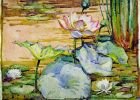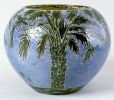 | Find Louisiana State Museum on Facebook |
 | Find Louisiana State Museum on Twitter |
| 2016 Sunset Report |
| OLG & DCRT Strategic Plan 2020-21 through 2024-25 |

- Quality - Louisiana State Library
85% of the users of the State Library indicated that the State Library's services and resources was a good value for the State.Source: The Impact of the Louisiana Department of Culture, Recreation and Tourism on Louisiana's Economy and Quality of Life for Louisiana's Citizens - June 2006
- Louisiana's deep water ports
Did you know that Louisiana's five deep water ports handle more than 457 million tons of U.S. waterborne commerce a year? - Quality - Louisiana State Library
85% of the users of the State Library indicated that the State Library's services and resources was a good value for the State.Source: The Impact of the Louisiana Department of Culture, Recreation and Tourism on Louisiana's Economy and Quality of Life for Louisiana's Citizens - June 2006
- Atchafalaya Heritage Area
The Atchafalaya Heritage Area has been designated by Congress as a National Heritage Area.
- Impact - DCRT Returns Investment Dollars to Louisiana
For every state tax dollar spent by the Department of Culture, Recreation and Tourism, $5.86 is returned to the State Treasury and citizens of Louisiana.Source: The Impact of the Louisiana Department of Culture, Recreation and Tourism on Louisiana's Economy and Quality of Life for Louisiana's Citizens - June 2006
- Impact - Louisiana Office of Tourism Tops Returns on Investment
$13.90 is the return on investment for every dollar spent by the Office of Tourism. Over 175,000 people were directly employed by the Louisiana travel and tourism industry in 2004. In terms of production, $5.9 billion (3.8%) of Louisiana's Gross State Product was directly attributable to expenditures by visitors to LouisianaSource: The Impact of the Louisiana Department of Culture, Recreation and Tourism on Louisiana's Economy and Quality of Life for Louisiana's Citizens - June 2006
- Impact - Supporting the Louisiana Arts
Every dollar in state support for the Arts leverages $7 in earned and contributed revenue. Louisiana's cultural enterprises provide nearly 144,000 jobs for Louisiana citizens, accounting for 7.6% of total employment. Arts has a total economic impact of $934 million in Louisiana.Source: The Impact of the Louisiana Department of Culture, Recreation and Tourism on Louisiana's Economy and Quality of Life for Louisiana's Citizens - June 2006
- Impact - Visitors Generate State Revenue
In terms of tax revenues, visitor spending accounted for $677 million of 2004 Louisiana revenues, or 8.3% of the total 2004 State Budget.Source: The Impact of the Louisiana Department of Culture, Recreation and Tourism on Louisiana's Economy and Quality of Life for Louisiana's Citizens - June 2006
- Quality - Louisiana State Museums
95% of State Museum's visitors strongly agreed or agreed that the State Museum was an educational experience and has expanded their awareness of Louisiana's cultural history.Source: The Impact of the Louisiana Department of Culture, Recreation and Tourism on Louisiana's Economy and Quality of Life for Louisiana's Citizens - June 2006
- Quality - Historic Preservation and the Arts
78-80% of Louisiana residents believe that historic preservation and arts are important and should be high priorities.Source: The Impact of the Louisiana Department of Culture, Recreation and Tourism on Louisiana's Economy and Quality of Life for Louisiana's Citizens - June 2006
- Impact - Louisiana Serve Program
The Louisiana Serve Program in the Office of Lieutenant Governor returns 2.8 million in non-state revenue to Louisiana. - Impact - Louisiana State Museum
The Office of State Museum returns $6.99 for every tax dollar spent.Source: The Impact of the Louisiana Department of Culture, Recreation and Tourism on Louisiana's Economy and Quality of Life for Louisiana's Citizens - June 2006
- Impact - Louisiana State Parks
Visitor spending at Louisiana State Parks returns $3.23 in state taxes for every dollar spend on operating and maintaining all our beautiful parks. Out-of-state visitors to Louisiana State Parks spent almost $12 million in Louisiana and produced an economic impact of over $24 million. Louisiana residents spent another $29.2 million while visiting the parks.Source: The Impact of the Louisiana Department of Culture, Recreation and Tourism on Louisiana's Economy and Quality of Life for Louisiana's Citizens - June 2006
- Impact - Scenic Byways Program
The Scenic Byways program leverages $1.56 for every dollar spent by the program.Source: The Impact of the Louisiana Department of Culture, Recreation and Tourism on Louisiana's Economy and Quality of Life for Louisiana's Citizens - June 2006
- Louisiana State Parks and the National Register
Thirteen Louisiana State Parks sites are on the National Register of Historic Places. They include:
• Audubon State Historic Site
• Centenary State Historic Site
• Fort Pike State Historic Site
• Fort Jesup State Historic Site
• Longfellow-Evangeline State Historic Site
• Mansfield State Historic Site
• Marksville State Historic Site
• Plaquemine Lock State Historic Site
• Port Hudson State Historic Site
• Poverty Point State Historic Site
• Otis House at Fairview-Riverside State Park
• Rosedown Plantation State Historic Site
• Winter Quarters State Historic Site - Louisiana State Parks Visitation
Nearly two million people visited a Louisiana State Park last year. - Louisiana State Parks Grow and Renew
The Louisiana Office of State Parks has spent nearly $80 million in major construction projects since 2004, providing two brand-new parks and a new historic site, adding cabins and campsites to existing parks and building visitor center at one park, the preservation area and three historic sites. - Louisiana State Parks Wireless Internet
The Louisiana Office of State Parks provides free wireless internet access at all 20 recreational parks. Extensive coverage areas include most cabins, RV slips and campsites. - Louisiana State Parks Online Reservations
You can now make online reservations for cabins, campsites, lodges and group camps – at www.ReserveLaStateParks.com - Louisiana State Parks Honors National Parks Service Senior Pass Program
Visitors who hold an America the Beautiful Senior or Access Pass, and whose home State Park system honor the America the Beautiful passes for camping discounts, are entitled to a 50% reduction on camping fees at Louisiana State Parks. Certain restrictions apply, see State Parks' fees & facilities page for more information. - Louisiana State Parks Draw Media Attention
Louisiana State Parks sites have been featured in movie and television releases including "True Detective," CBS’ "Zoo," and "NCIS: New Orleans," "G.I. Joe: Retaliation," "Selfless," "Devil’s Due," and commercials for Popeyes and Toyota. - Capitol Park Welcome Center
The main meeting room in the Capitol Park Welcome Center is named after Margaret Taylor, wife of U.S. President Zachary Taylor. The couple resided in a small house near the present day location of Capitol Park until Taylor was elected to the Presidency.
| Table of Contents | Section 1 | Section 2 | Section 3 | Section 4 | Selected Bibliography |
The Arts and Crafts Movement in New Orleans
The Arts and Crafts movement came to New Orleans via the World’s Industrial and Cotton Centennial Exposition in 1884, held at what in now the site of Audubon Park.
Northern suffragette Julia Ward Howe organized the women’s department of the Exposition which sponsored lectures, classes and exhibitions. Visitors were bombarded with displays of pottery, needlework, wallpaper, fabrics, carpets and furniture sent by, among others, the Massachusetts Normal Art School, and the Rhode Island and Cincinnati Schools of Design.
At the beginning of the Exposition, William Woodward was an instructor at the Rhode Island School of Design and had organized successful art classes in several suburban Providence communities. Tulane University President William Johnston, seeking a faculty member versed in both art and architecture, recruited Woodward. Hired in 1884 as Tulane’s’ first art instructor, Woodward’s inaugural assignment was to attract students to Tulane by teaching drawing at the Cotton Centennial.
Prompted by the success of the event’s art programs, President Johntson decided to continue Woodward’s popular classes immediately following the closing of the Exposition. In fact, Tulane’s other art instructors, Ellsworth Woodward and Gertrude Roberts Smith, also participated as teachers in the community effort. In ten years, nearly 5,000 men and women enrolled in the free evening and Saturday courses. William Woodward, always an advocate of the Arts and Crafts movement, used the words of John Ruskin to advertise the classes in an 1888 brochure.
Tulane University Decorative Art League / The New Orleans Art Pottery
As part of the Tulane University free classes, women’s decorative art courses were taught two night per week. The Tulane Decorative Art League was an outgrowth of these classes. Under the auspices of Ellsworth Woodward, the League offered instruction in art pottery, woodcarving, fresco, metalwork and needlework. Although very few objects have been identified as products of these courses, several rosewood boxes both inlaid and overlain with cut sheet brass have descended in families of the decorative arts students. These boxes are believed to be the earliest surviving examples of Arts and Crafts manufacture in Louisiana.
The important though short-lived predecessor of Newcomb Pottery was also formed by members of the Tulane University Decorative Art League. Organized under William Woodward’s direction in 1888, The New Orleans Art Pottery was one of the first in the United States. Established just 8 years after Rookwood, it preceded the resurrected Chelsea art pottery by 3 years and the Grueby Faience Company by 7 years. Both Joseph Meyer, the potter who threw the majority of pots at Newcomb for thirty years, and his childhood friend, the eccentric George Ohr, turned pots for the Baronne Street works. The workshop produced jardinieres and vases, the women decorators often sculpting and applying exuberant dragon, shell or foliage motifs. Very few of the creative, but porous-bodied and low-fired utilitarian pieces survived. Although the pottery was sold to clients in Boston, New York and Chicago, the New Orleans Art Pottery was not a financial success and closed sometime in the 1890's.
 Ellsworth Woodward G. Moses & Son Loaned by the Newcomb Foundation Photoprint mounted on board |  Waterlilies Ellsworth Woodward Watercolor on board |
The Establishment of Newcomb Pottery
In 1886 Josephine Louise Newcomb made a gift to Tulane University to establish the nation’s first coordinate women’s school, the H. Sophie Newcomb Memorial School, named for the widow’s deceased daughter.
Ellsworth Woodward was hired to head the art department. Distressed to find no opportunity in the agrarian South for his students to apply their fine arts training upon graduation, Woodward committed to create a respectable means of employment for his proteges. The "experiment" he chose, an art pottery, proved to be an artistic, social and commercial success for several decades.
The driving forces behind the Newcomb College pottery were products of the early Arts and Crafts Schools. Art department chairman Ellsworth Woodward attended the Rhode Island School of Design, art instructor Gertrude Roberts Smith graduated from the Massachusetts Normal Art School, and pottery decoration instructor Mary Given Sheerer was educated at the Cincinnati School of Design. The combined vision of these innovative individuals shaped the development of a successful craft workshop, embodied with ideals straight out of William Morris’ 19th century England.
Woodward traveled abroad in 1891-92 when on a leave of absence from teaching. After visiting the Delft Pottery in Holland he impulsively sent an order to Newcomb to purchase a clay table, sink and clay. It would be years before the pottery at Newcomb entered production.
Professor Woodward convinced Tulane’s administration of the importance of founding a pottery and President Brandt V. B. Dixon traveled to Ohio to personally tour the Rookwood Pottery. There, he was advised to contact Mary Given Sheerer, a Cincinnati-trained sculptor and painter who had also taken a course in china painting. Sheerer was recruited in 1884 to teach pottery design and decoration.
Early Newcomb Wares
Experimentation with clay bodies, glaze recipes, decoration techniques and kiln firing began in a building on the Washington Avenue campus in the fall of 1894. The same year, Newcomb College offered its first china painting class, followed by a ceramic course just one year later.
Newcomb administrators set Morris-like standards: the pots were to be well-designed, one of a kind, hand-thrown and hand-decorated utilitarian pieces. Decoration was to be inspired by Louisiana flora and fauna. Local clays dugs north of Lake Pontchartrain were used (although suitable clay for throwing required the addition of various materials from Alabama, South Carolina, New Jersey, Kentucky and Indiana). Before Newcomb pottery was offered to the public for sale, its quality had to pass a rigorous assessment by a four-person faculty jury. If a piece did not meet criteria of the committee, the College’s impressed cipher of an "N" within a "C" was ground off the bottom of the pot with an abrasive wheel.
Many of the earliest experimental pieces were red-bodied, undecorated wares made to test various glaze recipes in the kiln. At its very young age, the Pottery had not yet established an identity and some of these early pieces blatantly emulate ancient ceramic prototypes, particularly those from the Orient.
Sheerer experimented with several decoration techniques before selecting a system that remained more or less unchanged for roughly forty years. Painting slip, or liquid clay, on unfired greenware, as was done with French barbotine and Rookwood wares, proved too difficult. China paints in a wide spectrum of reds, blues, pinks, greens, purples, and blues were briefly used but then abandoned. Sheerer soon discovered her preferred decoration method of applying underglaze pigments to biscuit, or once-fired clay. She restricted the palette to yellow, black, blue and green, all colors resulting from chemicals that fired with fairly predictable and stable results. Pots were then covered with a clear, shiny glaze and second-fired.
The students’ earliest bold, flat interpretations of indigenous plants and animals, often featuring botanical specimens drawn in cross-section, were clearly derived from English models. Decoration was strongly influenced by numerous printed sources available in the art school, books on design and plant ornamentation by some of the leading Arts and Crafts figures: Owen Jones, John Ruskin, William Morris, Walter Crane and Christopher Dresser. Plant drawing was a required course at the art school and many Newcomb students maintained their own gardens at home for inspiration and study.







